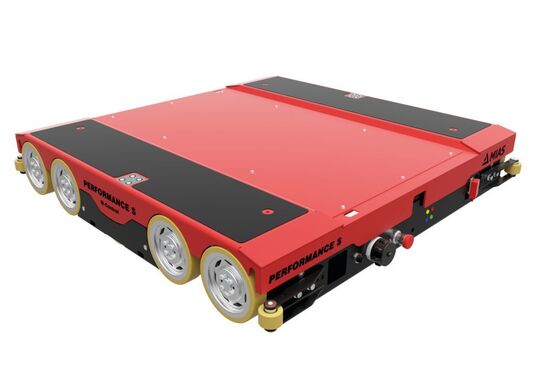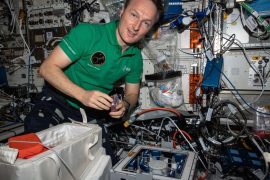shuttle Shuttle with power and energy density in the smallest space
by Thomas Vershing
Mias, a specialist in automated intralogistics solutions, is introducing a completely newly developed, modular shuttle system that is characterized by particularly high driving maneuverability performance. Users also benefit from maximum energy density in the smallest of spaces, a control concept that adapts to individual components, open connectivity and cost savings.
companies on the subject

(image: mias)
Additional M-Control for Shuttle with the designation “Performance S” and in-house developed control technology can be used with associated chain conveyors on either a storage and retrieval machine (RBG), distribution trolley or lifter. Thanks to the modular lifting table, it is equally suitable for taking industrial, EURO, CHEP and GMA pallets with loads up to 1,500 kg, and is also intended for use in deep-freeze areas. The shuttle has a single drive for the travel and lifting axles and, when loaded, can travel at speeds of up to 2.7 meters per second. When lifting, the value is 1.5 m per second and the passage in the channel is accompanied by a low v = ~ 0.3 m per second. Since the vehicle is just 155 millimeters high, less materials are needed to build the warehouse, meaning resources are conserved and costs are lower.
Innovative control concept implemented
Michael Keener, Head of Control Technology at Mias, emphasized the innovation, “Aiming to set a new benchmark in driving dynamics performance in the smallest of spaces, we have achieved a milestone in automation with the new Open Control concept ” “Another focal point during development was open and flexible interaction, among other things.”
Michael Keener, Head of Control Technology: “Aiming to set a new benchmark in driving dynamics performance in even the smallest of spaces, we have achieved a milestone in automation with the new Open Control concept.”
The PLC program, including speed and protection functions, runs on a fanless, ultra-compact industrial PC (IPC). To ensure high availability of IPC, the device works without rotating the storage media. Signals/rotary encoders are recorded and the converter is controlled via EtherCAT/IO-Link. A so-called wireless bridge is used for data transmission between the control of the mother vehicle (RBG) and the on-board control of the shuttle, establishing a Bluetooth-based PROFINET and TCP/IP connection.
Thrifty power cap set the pace
“Since the control technology has only minimal ‘footprint’, we achieve maximum energy density in the smallest space and there is enough room to use additional energy storage devices,” says Dr-Ing. Ingomar Schubert, Head of the Load Handling Equipment Division at MIAS. “When using the included power caps as standard with a payload of 1500 kg, a double game up to a depth of 25 meters is possible without intermediate charging.”
Dr.-Ing. Ingomar Schubert, Head of the Load Handling Equipment Division: “Since there is only a minimal ‘footprint’ in the control technology, we achieve maximum energy density in the smallest space and there is enough room to utilize the additional energy storage.”
The range of shuttle vehicles that can be achieved this way also ensures the best possible use of warehouse space. Another advantage is that thanks to the lift table’s modular design, different load carriers can be accommodated along the base frame. The use of belts reduces noise emissions and minimizes maintenance. The open interface design also allows a variable connection of a variety of storage and retrieval controls. All necessary licenses for integrated web visualization and communication are already included in the scope of distribution. This means there is no extra effort for third party licenses. I
* Thomas Wersching 85386 Eching, tel. +49 8165 70310, Mias Maschinenbau at [email protected], Head of Project Realization at Industrieanlagen und Service GmbH
(ID:47601738)

Web guru. Amateur thinker. Unapologetic problem solver. Zombie expert. Hipster-friendly travel geek. Social mediaholic.







